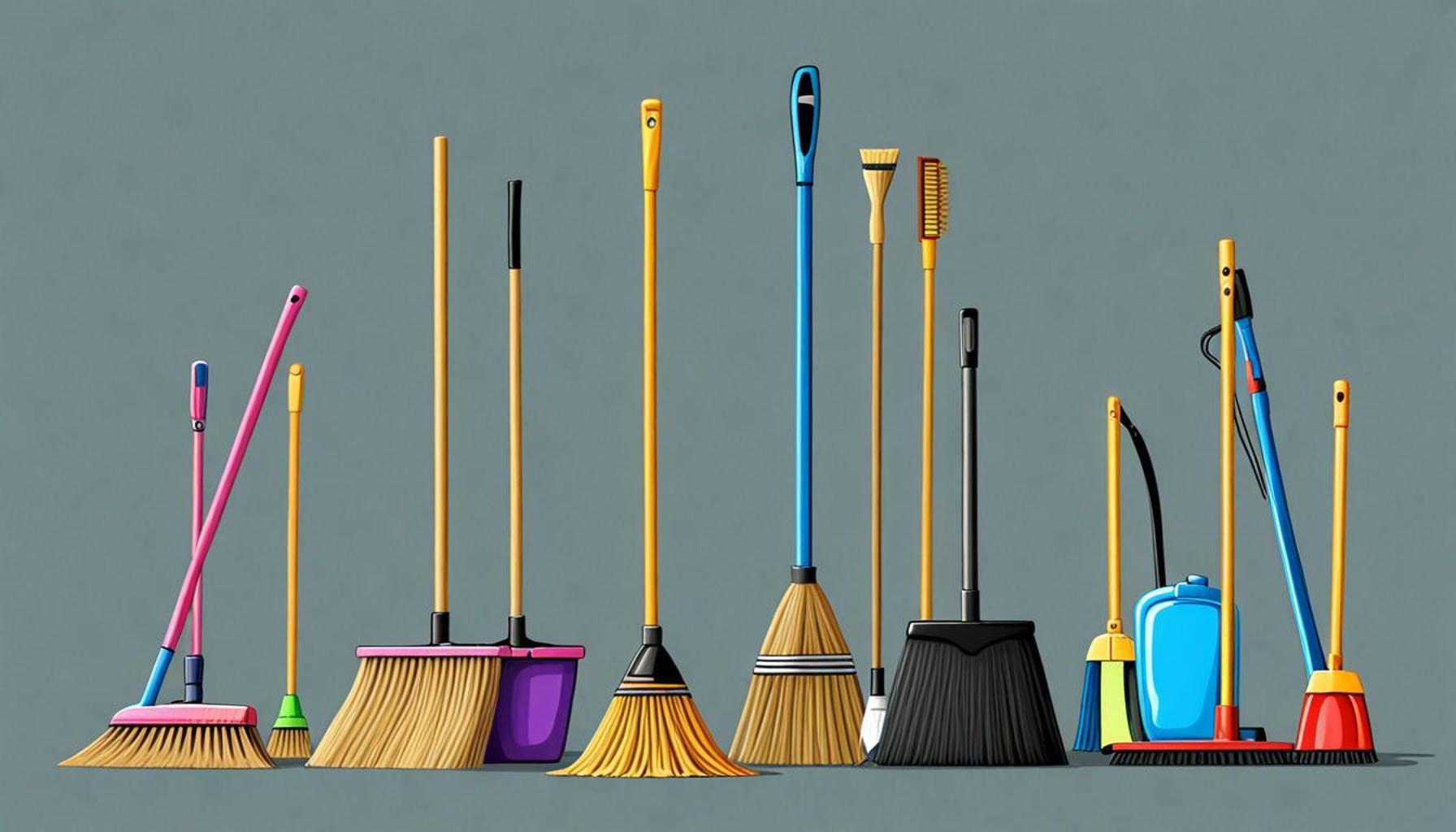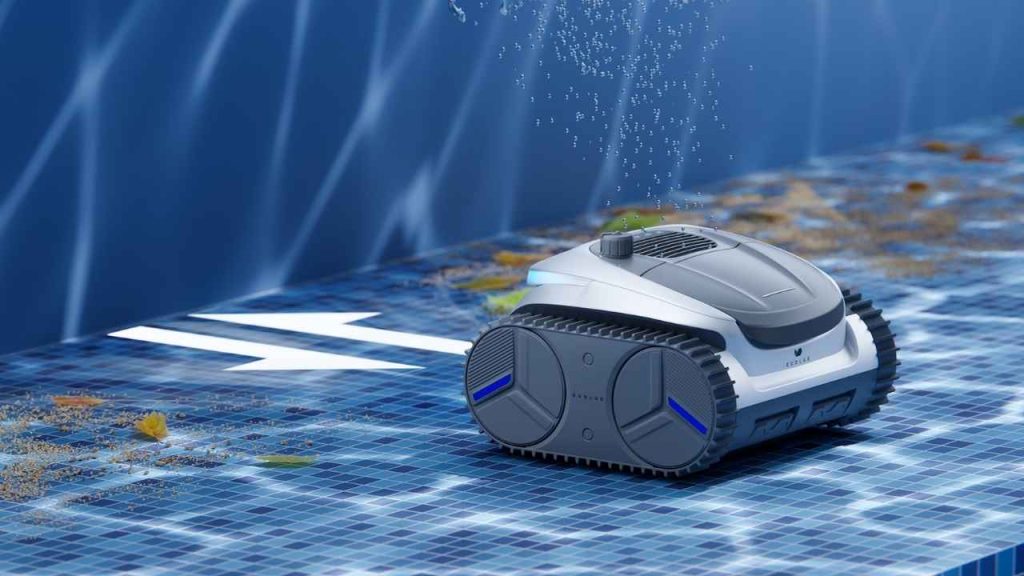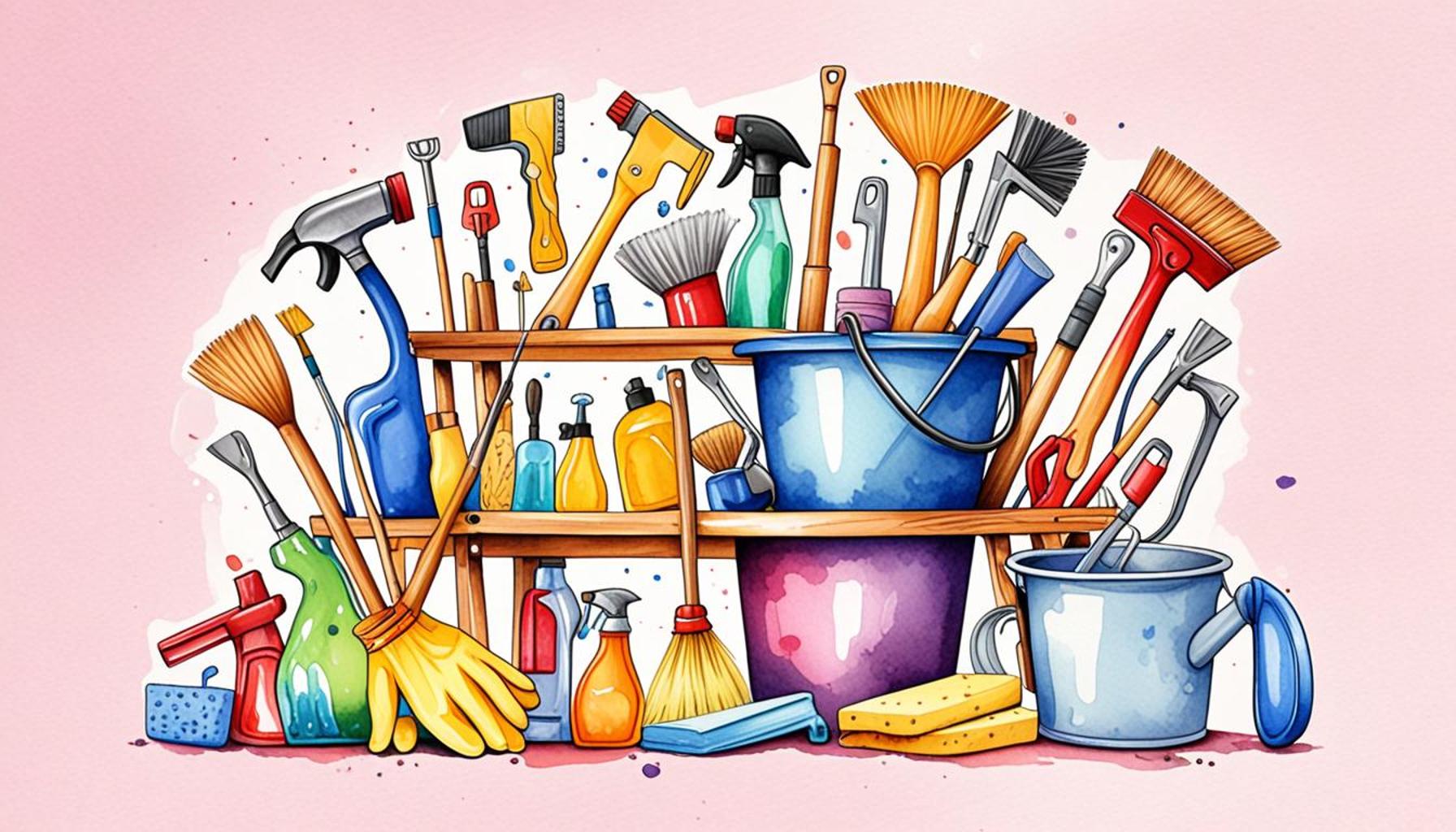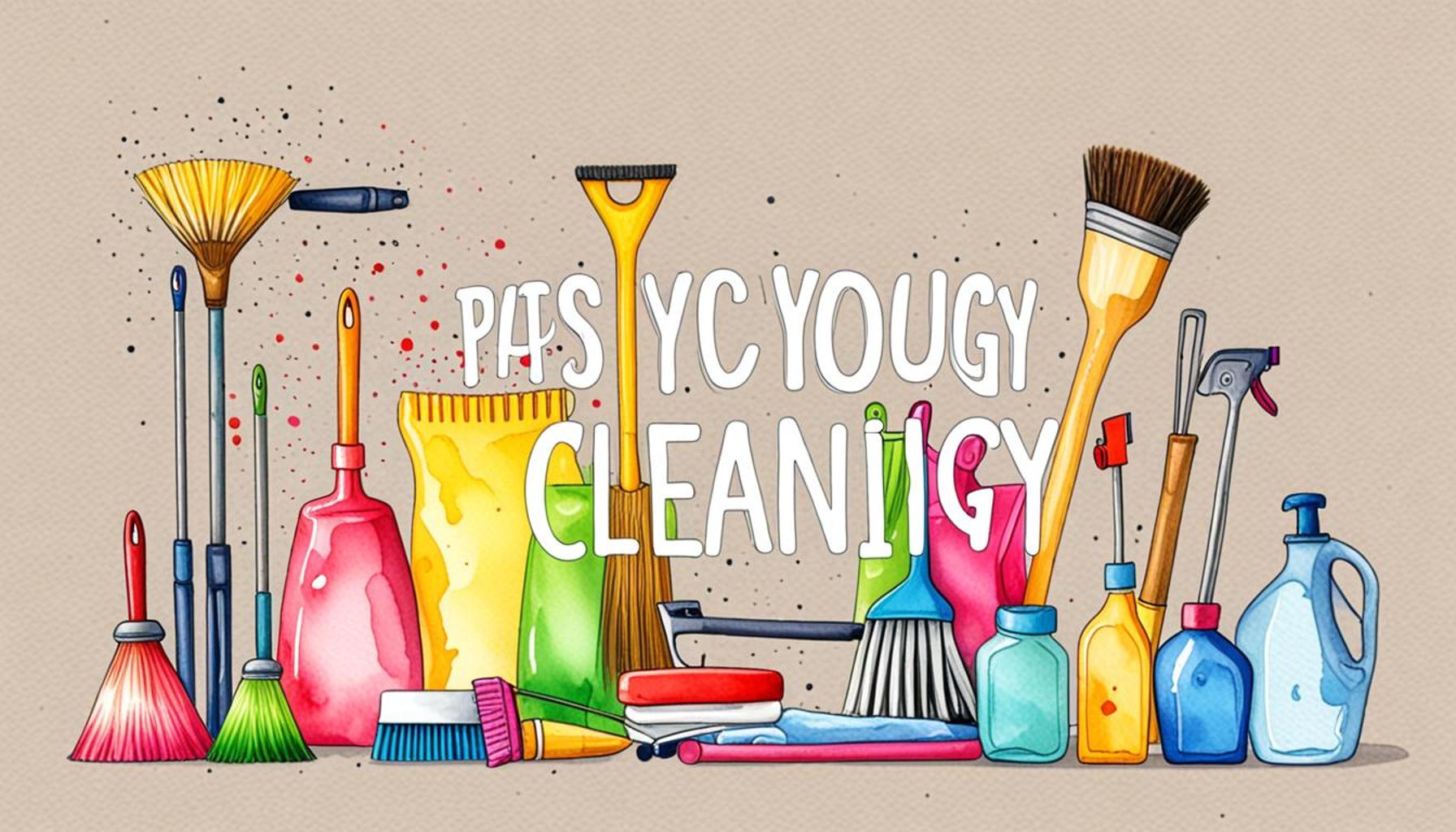The Evolution of Cleaning Tools: From Brooms to Smart Technology and Their Impact on Home Maintenance

Cleaning Tools Through the Ages
Cleaning has undeniably played a crucial role in fostering a healthy and safe living environment. From the early days when manual labor was the norm, to today’s technologically advanced solutions, our methods have transitioned significantly over the centuries, reflecting not just advancements in technology but also changes in lifestyle and societal norms.
Take, for example, the humble broom. Historically, this simple yet effective tool was often made from natural materials like twigs or straw bound together. It served as a cornerstone of household maintenance, allowing individuals to sweep away dirt, dust, and debris efficiently. The origin of the broom dates back to ancient civilizations, where it was primarily used not just for cleanliness, but also as a symbol of hospitality. In many cultures, a clean entrance was seen as welcoming, emphasizing the vital role of cleanliness in social interactions.
Fast forward to the 20th century, and we witness the advent of the vacuum cleaner, a game-changer in dirt removal. The earliest vacuum cleaners were bulky machines operated by hand and often required significant physical effort. Innovations like the bagless vacuum cleaner, introduced by manufacturers like Dyson in the 1990s, offered a more convenient approach to vacuuming. Today, various models on the market cater to specific needs, such as lightweight designs for easy maneuverability, and high-efficiency particulate air (HEPA) filters essential for those with allergies.
The Rise of Smart Technology
As we move deeper into the 21st century, smart technology has transformed how we approach cleaning. Devices like robotic vacuums, such as the Roomba, have gained immense popularity. These innovative machines utilize advanced sensors and algorithms to navigate around furniture, ensuring that every corner of our home is cleaned without any manual effort. With features like smartphone integration, users can schedule cleanings anytime, even while they’re away from home, ensuring a clean and inviting space at all times.
Moreover, many modern cleaning devices are designed with sustainability features in mind. For instance, several brands now offer vacuum cleaners that optimize power usage and incorporate recyclable materials, appealing to the environmentally conscious consumer. This focus on sustainability highlights a growing awareness regarding our ecological footprint and reflects a significant shift in public attitudes towards home maintenance and consumerism.

Understanding the journey from traditional brooms to robotic vacuums opens our eyes to the remarkable innovations that have not only enhanced our cleaning rituals but have also reshaped our daily lives. The incredible efficiency of contemporary cleaning tools grants us more freedom to spend our time on what truly matters. Join us as we delve further into the fascinating world of cleaning tools, celebrating the evolution of these essential devices and their profound impact on home maintenance throughout history.
DISCOVER: Click here to learn about the advantages of time blocking for your home maintenance</p
The Transformation of Cleaning Tools: A Historical Perspective
To truly appreciate how far we’ve come in the realm of cleaning, it’s essential to explore the evolution of various cleaning tools, each serving unique purposes and adapting to cultural and technological advancements. The journey begins with ancient instruments that laid the groundwork for modern cleaning methods.
The broom, with its rustic charm, was one of the first tools used for home maintenance. Crafted from natural elements like twigs, straw, or grasses, the broom was simple yet effective in gathering dirt and debris. Its inception can be traced back to ancient Egypt, where brooms were often made from palm fronds, symbolizing cleanliness and order—a necessity in societies that placed high value on domestic harmony. Over time, this tool transformed, with artisans adapting its design according to regional materials, leading to a variety of brooms used in different cultures.
As the Industrial Revolution unfolded, the demand for more efficient cleaning solutions emerged. This period marked the birth of the vacuum cleaner, a significant leap from traditional methods. The first vacuum, invented in the late 19th century, resembled a horse-drawn vehicle with a bellows system. It was cumbersome and required considerable effort, but it sparked a new trend in home maintenance. This march towards mechanization continued into the 20th century, giving rise to electric vacuum cleaners, which offered unprecedented convenience and speed in keeping homes spotless.
Key Innovations in Cleaning Technology
The evolution of cleaning tools is characterized by several pivotal innovations that have greatly impacted the efficiency of home maintenance:
- The Handheld Vacuum: Designed for specific tasks, such as cleaning upholstery and tight spaces, the handheld vacuum became an essential tool for quick clean-ups, particularly in homes with pets or children.
- Steam Cleaners: Emerging in the late 20th century, steam cleaners provided a chemical-free method of cleaning various surfaces. They kill bacteria and allergens, making them a favorite among health-conscious households.
- Robotic Vacuums: The introduction of devices like the Roomba marked a significant advancement in home cleaning technology. These automated machines operate independently, navigating homes while handling basic cleaning tasks, allowing homeowners to reclaim valuable time.
As we observed the shift from manual cleaning tools to mechanical devices, it became clear that each innovation not only reflected technological progress but also mirrored changes in societal expectations of cleanliness and convenience. Today’s gadgets and tools cater to a fast-paced lifestyle, where efficiency and effectiveness in home maintenance are highly prized.
The integration of smart technology into cleaning tools further emphasizes this trend. Now, cleaning is not just about the act itself, but it is also intertwined with convenience features such as app controls, scheduling, and real-time notifications about cleaning sessions. As we explore further in this article, we will uncover the implications these advancements have on home maintenance standards and our everyday lives, paving the way for the future of cleaning tools.
As we delve deeper into the evolution of cleaning tools, it’s fascinating to observe the trajectory from traditional brooms to innovative smart technologies that are reshaping home maintenance. In the past, household cleaning was primarily labor-intensive and time-consuming, characterized by simple tools such as brooms, mops, and cloths. These tools, made from natural materials like straw and wood, were effectively designed for their purposes but required significant physical effort and skill to achieve the desired cleanliness. The introduction of vacuum cleaners in the early 20th century marked a significant shift. These machines greatly reduced the time and physical effort required for cleaning, allowing homeowners to maintain their living spaces more easily and efficiently.Today, we stand on the threshold of a technological revolution in home maintenance. Smart cleaning devices, such as robotic vacuum cleaners and smart mops, use artificial intelligence and advanced sensors to navigate households autonomously. This not only minimizes human intervention but also enhances cleaning effectiveness. With the ability to program schedules and monitor cleaning via smartphone applications, these devices provide unparalleled convenience. Moreover, the integration of smart technology also means that cleaning tools are becoming more sustainable. Many of these modern appliances are designed to use less energy and water, aligning with the growing global emphasis on environmental responsibility. Additionally, smart cleaning solutions often feature specialized attachments and filters that allow for targeted cleaning without the need for harsh chemicals. As we examine the impact of these advancements, it is clear that our relationship with cleaning tools is evolving. The convenience and efficiency that come with smart technology not only save time but also open up new possibilities for maintaining a clean home in an increasingly busy lifestyle. With the ongoing development of these advanced tools, we can anticipate even more revolutionary changes in how we approach cleaning in the future. The journey from brooms to smart technology has redefined our homes and will continue to influence the standards of cleanliness and maintenance for years to come. In this context, understanding the technological trajectory and its implications on home maintenance—both from efficiency and sustainability perspectives—may inspire homeowners to rethink their cleaning strategies and embrace the future of home care. As we explore this evolution further, the potential for improved living environments becomes increasingly apparent, inviting curiosity and exploration among those eager for a smarter way to manage their homes.
DISCOVER MORE: Click here to learn how a cleaning schedule can benefit your family’s mental health</a
The Rise of Smart Cleaning Tools: Transforming Home Maintenance
As we venture deeper into the 21st century, the influence of technology on cleaning tools has reached unprecedented levels. The integration of smart technology in cleaning instruments is revolutionizing how we maintain our homes, offering efficiency and effectiveness that were once unimaginable. This shift isn’t merely about convenience; it reshapes our very approach to home maintenance and cleanliness.
One of the most significant developments in modern cleaning technology is the emergence of the robotic vacuum. Initially seen as a novelty, devices like the Roomba have rapidly evolved into essential household companions. According to a report from the International Federation of Robotics, sales of robotic vacuum cleaners have surged, with over 31 million units sold in 2020 alone. These devices offer homeowners the ability to schedule cleaning sessions via mobile apps, ensuring that floors are vacuumed daily without lifting a finger. Such automation has substantially reduced the time Filipinos devote to household chores, enabling them to focus on other meaningful activities.
Moreover, the advent of smart mops further underlines the trend towards automation in cleaning. With features such as automatic washing and drying, these mops not only clean floors but also eliminate the labor-intensive process of manual scrubbing. Smart mops can connect to the internet, allowing users to customize cleaning routines according to individual household needs. This level of customization caters to both busy professionals and families, providing solutions that were previously unattainable.
Connected Cleaning: The Role of IoT
The Internet of Things (IoT) plays a pivotal role in shaping the future of cleaning technology. By enabling cleaning devices to communicate with each other, IoT allows for more efficient home maintenance. For instance, smart home systems can sync robotic vacuums with other cleaning devices, leading to a more comprehensive cleaning strategy. Imagine a scenario where your robotic vacuum operates while your smart mop charges, ensuring that different surfaces receive the attention they need in a timely manner. Such synergy reflects a profound shift in how we view home maintenance, moving from standalone cleaning tasks to an integrated approach.
Another noteworthy innovation is the development of AI-powered cleaning assistants. These tools utilize machine learning algorithms to adapt their cleaning patterns over time, learning from user preferences and optimizing routes in real-time. They analyze environmental factors such as floor types and furniture arrangements, enhancing performance quality with every cleaning session. This emerging technology not only boosts cleaning efficiency but also offers users direct feedback, informing them about their cleaning habits through tailored reports.
As intelligent cleaning tools continue to advance, they bridge the gap between maintenance and home health. For example, air purifiers equipped with cleaning capabilities can assess air quality and adapt their filtration processes in response. Such integration amplifies the role of cleaning technology as a facilitator of overall home wellness, highlighting the importance of a clean environment in supporting a healthy lifestyle.
Overall, the evolution of cleaning tools—from rudimentary brooms to sophisticated smart technology—is a testament to our constant quest for better home maintenance solutions. The seismic shifts in this domain not only reflect technological progression but also align with modern expectations for convenience, hygiene, and efficiency, ensuring that cleaning remains an essential yet effortless part of daily life.
DON’T MISS: Click here to learn about common cleaning mistakes
Conclusion: Embracing the Future of Cleaning
In summary, the journey from simple brooms to advanced smart technology exemplifies how our approach to home maintenance has been irrevocably transformed. As we embrace the potential of intelligent cleaning tools, we find ourselves not only enhancing efficiency but also elevating the standards of cleanliness and health within our homes. The integration of automated vacuum cleaners, smart mops, and IoT connectivity illustrates a significant paradigm shift—one where mundane household chores no longer consume our valuable time.
Moreover, the evolution of cleaning tools signifies more than mere convenience; it reflects a burgeoning understanding of cleanliness as a pivotal contributor to overall well-being. Innovations like AI-powered assistants and smart air purifiers highlight the importance of creating a clean and healthy living environment. As these technologies become increasingly sophisticated, homeowners are empowered to customize their cleaning experiences to fit their unique lifestyles, leading to better management of both time and resources.
As we look forward, the implications of these advancements raise important considerations. How will future innovations continue to shape our cleaning habits and our homes? What new challenges and opportunities will arise as we become ever more reliant on technology? As consumers, staying informed and adaptable will be crucial in harnessing the full potential of these emerging tools. Indeed, the evolution of cleaning tools marks a new era in home maintenance—one that invites us to discover, innovate, and prioritize the health and quality of our living spaces.


